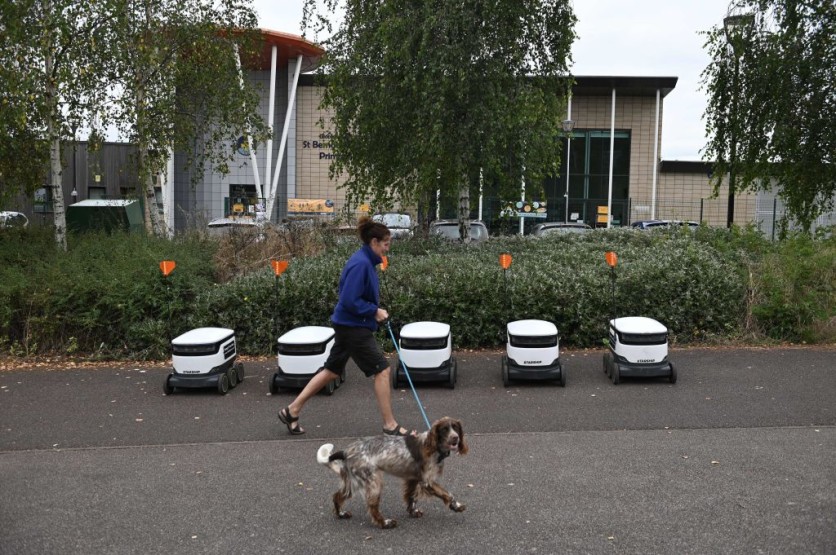The recent Hackathon organized by the UK government brought together 40 programmers to delve into the realms of AI and robotics, particularly for addressing bomb threats. DAIC orchestrated the event with the goal of fostering collaboration among top minds to create AI-powered deployable systems.

Reducing Bomb-Disposal Risks Through AI, Robotic Dogs
The UK government recently engaged 40 programmers in a Hackathon aimed at harnessing the power of artificial intelligence (AI) and robotics for optimal responses to bomb threats.
Orchestrated by the Defence AI Center (DAIC), Interesting Engineering reported that this event established in 2021 to propel the integration of AI for defense purposes, gathered talented individuals to collaboratively tackle the challenge.
While robotic dogs like Boston Dynamics' Spot have long been recognized for their potential in emergency situations, such as locating signs of life in hazardous areas, there remains a need to enhance the precision of these missions with minimal human intervention.
The focus of the hackathon, organized by the DAIC, was to unite top-notch minds and facilitate collaborative efforts in developing deployable systems where AI plays a pivotal role.
Manufacturers have dedicated significant efforts to perfecting actions like ascending stairs, navigating around obstacles, and scaling rough terrain. In the hackathon, programmers were specifically assigned the challenge of harnessing these refined capabilities for simulations of life-threatening situations.
Assessing Participants Across Five Award Categories
During the three-day event, the forty selected programmers collaborated in five teams to showcase the utilization of AI-powered capabilities. The initial two days were dedicated to formulating strategies to address the simulated scenarios, with teams diligently refining their programming approaches.
The hackathon's judging panel included representatives from the 29EOD&S Group, DAIC, and Defence Equipment and Support (DE&S). As stated in their press release, they assessed participants across five award categories: teamwork, collaboration, innovation, practical application, and endeavor and focus.
Lt Col Chris Coles of 29EOD&S Group expressed satisfaction, noting the gratifying talent and dedication displayed in creating bomb disposal tools that operate without requiring close human proximity. He anticipated that the observed developments would significantly contribute to research and development in the EOD&S space.
Wing Commander Paul Austin of the DE&S Future Capabilities Group emphasized the organization's commitment to leveraging technology for the advantage of the Armed Forces. He highlighted the collaborative nature of the journey, emphasizing the event as a wonderful example of participants' enthusiasm for solving a military-focused problem.
Cdre Rachel Singleton RN, the head of the DAIC, expressed great enthusiasm about the collaboration between Defence, industry, and academia in developing an AI and robotics solution for a practical use case.
She emphasized the significance of instigating and guiding such collaborative innovation responsibly, stating that it is among the most crucial work conducted at the DAIC, particularly when aimed at enhancing the safety of personnel.
ADS Advance reported that the UK has demonstrated a willingness to explore and experiment with cutting-edge technology. It would not be unexpected to witness the deployment of a robotic dog in a real-life mission in the future.
Related Article : Robot Guide Dog Responding to Tugs on Its Leash Could Help Blind and Visually Impaired People


![Apple Watch Series 10 [GPS 42mm]](https://d.techtimes.com/en/full/453899/apple-watch-series-10-gps-42mm.jpg?w=184&h=103&f=9fb3c2ea2db928c663d1d2eadbcb3e52)


